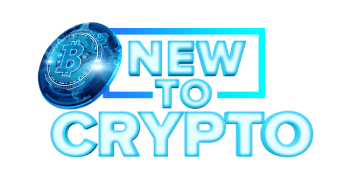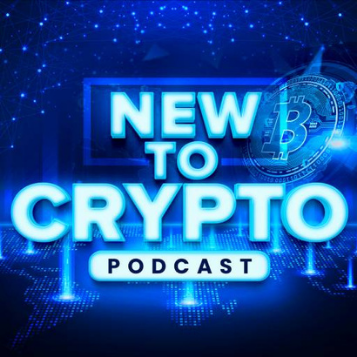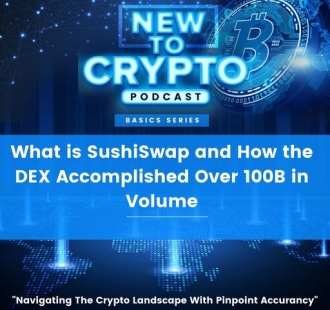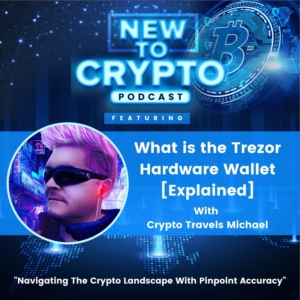What is SushiSwap and How the DEX Accomplished Over 100B in …
SUMMARY KEYWORDS
token, crypto, sushi, pools, users, swap, liquidity, ethereum, liquidity providers, smart contracts, decentralized exchange, episode, exchange, 0x, fees, earn, maki, protocol, reward, sam
00:00
Welcome to the New to Crypto Podcast designed to guide you through the crypto landscape with pinpoint accuracy created for the new and intermediate crypto investor. Join your host Crypto Travels Michael as he takes you through the different facets of getting started and succeeding in your crypto journey. New to Crypto Podcast brings you new episodes daily Monday through Friday with surprise bonus episodes sometimes on the weekend. Let me ask you, are you new to crypto? Don’t know where to start? Are you more experienced too but have questions? Then you’re in the right place. This podcast is designed for you coming at you from the Trading Center and the Lifestyle Dezign Studio. Here’s your host Crypto Travels Michael.
00:53
Hey, welcome to today’s show. I’ll tell you I am excited about this show. This show is growing so far to date, listeners from 60 countries around the world spanning six continents. And 334 cities have tuned in to listen to this show. So from me to all of you, I truly thank you. And I look forward to creating incredible content which is going to help you understand more about crypto in the future. Okay, so without further ado, let’s jump into today’s episode.
01:30
What isSushiSwap? SushiSwap is an Ethereum based DEX or decentralized exchange. SushiSwap is an example of an automated market maker or AMM. It’s popular among crypto users who swap tokens. If you remember from other episodes of this show, AMM’s are decentralized exchanges, which use smart contracts to create markets for any given pair of tokens. SushiSwap launched in September 2020 as a fork of Uniswap. And it became synonymous with the decentralized finance or DeFi movement and the trading explosion and DeFi tokens.
02:17
SushiSwap aims to diversify the amm market and also add additional features that weren’t previously present on Uniswap, such as increased rewards for network participants via its in house token, which is effectively called SushiSwap is a software running on Ethereum that seeks to incentivize a network of users to operate a platform where users can buy and sell crypto assets. It’s similar to Uniswap.
02:52
SushiSwap was forked from Uniswap. SushiSwap uses a collection of liquidity pools. To achieve this goal. Users first lock up assets into smart contracts, and traders then buy and sell cryptocurrencies from these pools, swapping out one token for another. Some numbers about SushiSwap has $4.45 billion worth of liquidity locked. The total volume has been over $100 billion and it currently has 1818 pairs offered on SushiSwap.
03:30
The SushiSwap token offers community governance and the ability to form liquidity provider tokens. One of the growing number of decentralized finance or defi platforms is definitely SushiSwap. And it allows users to trade cryptocurrencies, without the need for a central operator or administrator. There’s nobody in between. There’s no third party company. It’s just you doing the swap?
03:56
So who are the founders of SushiSwap? Well, the founders are somewhat anonymous. They’re only known as chefs. And not much is known about Chef Nomi, the other founder or co-founder is 0x Maki, sometimes just known as Maki, which is Maki. So between them they handle SushiSwap’s code, product development and business operations.
04:25
More recently, the torch of SushiSwap has been passed on to Sam Bankman Fried. Sam is the CEO of a derivatives exchange called FTX. And a quantitative startup trading firm called Alameda research. Sam is well known in the crypto industry. He’s one of the few who it is said that he has reached 11 figures net worth through crypto, yes, that’s greater than $10 billion. I’m going to try to get Sam on this show in the future.
04:57
So back to SushiSwap. What makes SushiSwap unique, is an automated trading liquidity is set up between any two cryptocurrency assets. Its main audience is defy traders looking to capitalize on the boom in Project tokens and create liquidity. Hmm do away with order books entirely, while avoiding problems such as liquidity issues, which is a setback with traditional centralized exchanges,
05:29
SushiSwap aims to improve over others such as Uniswap. By increasing the impact users can have on the platform, SushiSwap takes up point 3% cut from transactions occurring in its liquidity pools. While its Sushi token is used to reward users with portions of those fees. The Sushi token also entitles users to governance rights. Currently the market cap for the Sushi token is $1.74 billion with a current token price at around $13.74. It’s an ERC 20 token since it’s built on Ethereum, and the token is available on Coinbase, Binance, SushiSwap and other exchanges online.
06:18
The circulating supply is just over 127 million tokens, which is a lower token supply than many other projects. The maximum supply was only 250 million tokens. I personally like projects which have a lower token supply. So let’s unpack how SushiSwap works. SushiSwap users lock up their funds in token pairs with liquidity pools, which provides the funds needed to complete swaps. Those users are then rewarded with a small percentage of fees generated by trades, a process called yield farming.
06:58
Beyond token swaps, SushiSwap offers other defined features such as the ability to stake Sushi tokens in the network, and earn rewards. These Users can also participate in lending services and purchase newly offered tokens from defy startup projects by using its Miso service. The sushi token is an ERC 20 token issued to liquidity providers also known as LPs these liquidity providers earn by providing liquidity to pools on SushiSwap or through staking in exchange for SLP tokens, which are used to govern the protocol.
07:42
The token was designed to reward early users of the protocol by allowing them to continue earning a cut of SushiSwap’s fees, even after they have stopped providing liquidity to SushiSwap’s pools. This can be done by staking Sushi to earn more Sushi on SushiSwap’s Sushi Bar. That was a mouthful and a lot of sushi.
08:07
So let’s talk aboutSushiSwap Farms first for a moment, liquidity providers contribute to SushiSwap’s pools by connecting their Ethereum wallet to the SushiSwap farming software and locking two assets into a smart contract. For example, the USD and eth pair on sushi swap liquidity pool consists of equal values of USDT token and eth token deposits. buyers can then swap tokens within the pool based on the protocol’s rules. smart contracts running SushiSwap, take the amount of tokens from the buyer and send an equivalent amount of tokens back, keeping the total pool price constant. In exchange for maintaining liquidity in these pools, providers are then rewarded with protocol fees, along with a portion of the 100 newly minted Sushi daily. Providers can reclaim their funds whenever they want, along with their harvest, which is the cryptocurrency earned from farming. Users wishing to earn more crypto after harvesting their Sushi can make use of the Sushi Bar, which is an application that allows them to stake their Sushi to earn the xsushi token, which is composed of sushi tokens bought on the open market with a portion of all the fees generated on the exchange.
09:44
So let’s recap what we just learned. SushiSwap’s token recap what it does. The Sushi token is the governance token on the SushiSwap exchange. It was launched in August of 2020 the token it currently has a market cap of $1.7 billion and it’s available on several major cryptocurrency exchanges, like Coinbase, Binance and some others.
10:09
So as mentioned previously, the two founders of sushi swap chef know me, and 0x Maki. How did it all get started? Originally Chef Nomi released a medium post and 0x Maki saw this and decided to join the SushiSwap Discord, being one of the first people to join the discord for SushiSwap 0x Maki spoke at length with Chef Nomi and became the co founder of SushiSwap.
10:42
So this is just a little backstory about how sushi swap was originally set up and founded. SushiSwap exchange lets you easily swap between over 100 ERC 20 tokens. There’s no KYC required, since it’s a DEX, a decentralized exchange. All you need is a web 3.0 wallet such as MetaMask or or another Ethereum based wallet, you’d need some aetherium to pay the gas fees to execute swaps. I hope that this episode has helped you better understand SushiSwap and some of the benefits when using it. So this concludes today’s episode. And remember to join in here tomorrow. Until then, make it a great day.
11:28
Thanks for tuning in to New to Crypto Podcast. If you liked the episode, be sure to follow and subscribe. You can listen to every episode on all major platforms to have an interest in being on the show or one advertising reach out at newtocrypto.io. Head over to our site newtocrypto.io to access the resources mentioned in each episode. Until next time, remember to navigate the crypto landscape with pinpoint accuracy










![Learn About How Internet Computer is Creating a New Decentralized Internet on the Blockchain [Explained]](https://newtocrypto.io/wp-content/uploads/2021/11/Learn-About-How-Internet-Computer-is-Creating-a-New-Decentralized-Internet-on-the-Blockchain-Explained-300x300.jpg)



